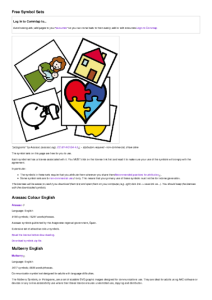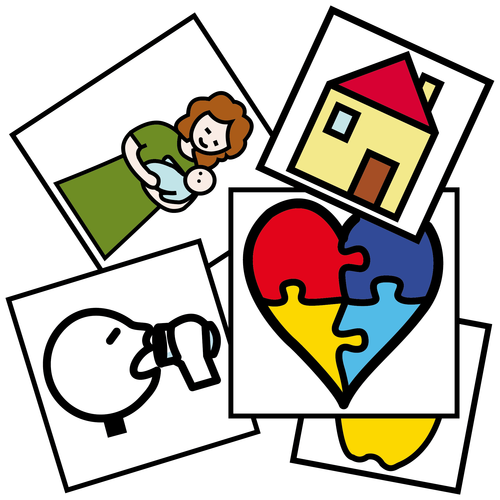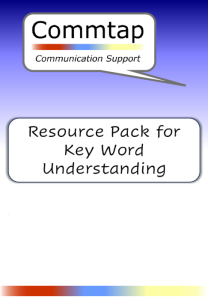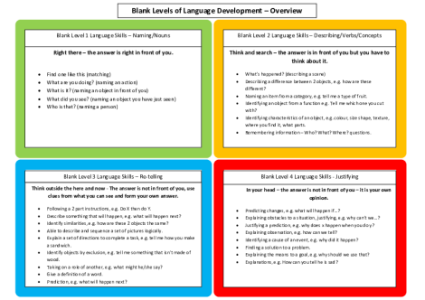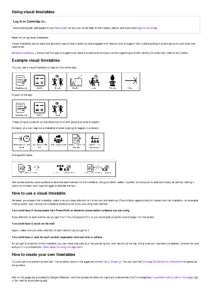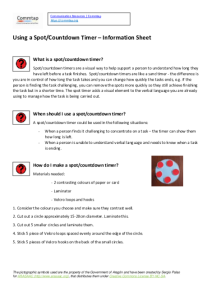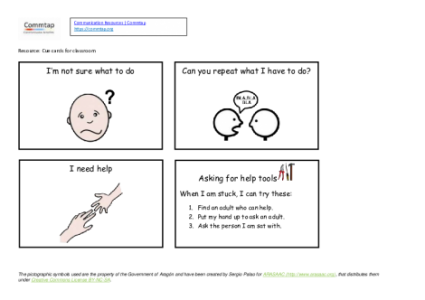Search
User login
Topic “Instructions”
Barrier Games Resource Pack Video Instructions
Created 2 February 2024; updated 7 March 2025.
Barrier Games Resource Pack Video Instructions
This video shows you how to use the barrier games resource pack.
Sections
Links open in YouTube.
Using visual timetables
Ideas for using visual timetables.
Visual timetables are an easy and powerful way to help children to stay engaged with lessons and to support their understanding of what's going on and what they need to do.
Research evidence shows that this type of support can reduce anxiety and confusion whilst supporting a child's memory for what they need to do in tasks.
Example visual timetables
You can use a visual timetable to map out the whole day:
Strategies to support attention, listening and understanding language in students aged 7+
Created 2 November 2021.
Barrier game ideas
Barriers
Create a barrier so one person cannot see what the other person is doing. You could:
- Use a large hardback book
- Use two single fold files, stapled together to make a Π shape
- Use a ring binder (empty)
- Seat children back-to-back (only really suitable for paired work)
Games
Set of cards
Information sheet - using a spot/countdown timer
Created 13 July 2021; updated 24 October 2021.
Activities to develop understanding of instructions containing 3 key words - set 2 (nouns/adjectives)
| Activity/strategy name and materials required | How to do the activity | Key principles for doing the activity and comments |
|---|---|---|
| Sort the Washing (size + colour + noun) - Washing machine template - click here to print. You could stick the template onto a cardboard box and cut out a slot to post the clothing cards in to. | - Print and cut out the washing machine template and clothing cards. - Lay out the clothes cards in front of you. Explain to your child that you need to put the washing in the machine and that they can help. - Give instructions containing 3 key words (size+colour+clothing item), e.g. wash the big red hat, wash the small green socks. - After a few turns, encourage your child to give you an instruction. | If your child is finding it challenging to follow the instructions containing 3 key words you could try the following: - check that they understand the concepts being used in the instructions: colour and size Click here for activities that work on developing big/little/small. - Remove some of the pictures and give instructions containing 2 key words, e.g. have one size of clothes and different colours, 'was the red hat'. You could also look at activities that focus on two key words here: Two key word activities - set 1 Two key word activities - set 2 Two key word activities - set 3
If your child is following 3 key word instructions, you may like to try working on 4 key word instruction here: |
| Alien Visitors (size + colour + place) | If your child is finding it challenging to follow the instructions containing 3 key words you could try the following: - check that they understand the concepts being used in the instructions: colour and size Click here for activities that work on developing big/little/small. - Remove some of the pictures and give instructions containing 2 key words, e.g. have one size of clothes and different colours, 'was the red hat'. You could also look at activities that focus on two key words here: Two key word activities - set 1 Two key word activities - set 2 Two key word activities - set 3
If your child is following 3 key word instructions, you may like to try working on 4 key word instruction here: | |
| Pirate themed game (size + object + place) | If your child is finding it challenging to follow the instructions containing 3 key words you could try the following: - check that they understand the concepts being used in the instructions: size Click here for activities that work on developing big/little/small. - Remove some of the pictures and give instructions containing 2 key words, e.g. have one size of clothes and different colours, 'was the red hat'. You could also look at activities that focus on two key words here: Two key word activities - set 1 Two key word activities - set 2 Two key word activities - set 3 If your child is following 3 key word instructions, you may like to try working on 4 key word instruction here: |
Activities to develop understanding of instructions containing 2 key words - set 3 (noun + adjective/preposition)
| Activity/strategy name and materials required | How to do the activity | Key principles for doing the activity and comments |
|---|---|---|
| Big/little feeding game - works of object + size (noun + adjective) - a soft toy | 1. Print and cut out the big/little food pictures. 2. Ask your child to choose a favourite toy and explain you are going to feed them. 3. Explain you have big food and little food. Lay out a small selection of food - make sure you have both the big and little version of the same food. 4. Give your child instructions, e.g. give teddy the big carrot, give teddy the little eggs. 5. After a few turns, encourage your child to give you an instruction to follow. | If you child is finding understanding big/little difficult, try using some activities that focus on learning these concepts - click here |
Support Commtap to keep it online
Thank you for visiting Commtap.
Please read this message as it is extremely important.
- Visitor donations mean we can continue to host over 1,000 free activities to support speech, language, and communication development.
- Visitor donations mean we can continue to provide free resources to address a wide range of communication needs, including limited speech or language, interaction challenges, and needs associated with conditions such as developmental language disorder, autism, and cerebral palsy.
- Visitor donations mean we can continue to provide resources to support the work of speech and language therapists, teachers, teaching assistants, parents, and carers.
- Visitor donations mean we can continue to provide the free key word sign dictionary (bks.org.uk) which has over 2,000 Makaton and Signalong signs.
We know that not everyone is able to afford to pay to access these resources, however, if you can, please make a donation to keep the site going.
Thank you
Google ads on this page are provided by Google Adsense - and their presence does not imply any endorsement by Commtap. Report a problem with an ad on this page. Log in (for free) to avoid seeing Google ads.
